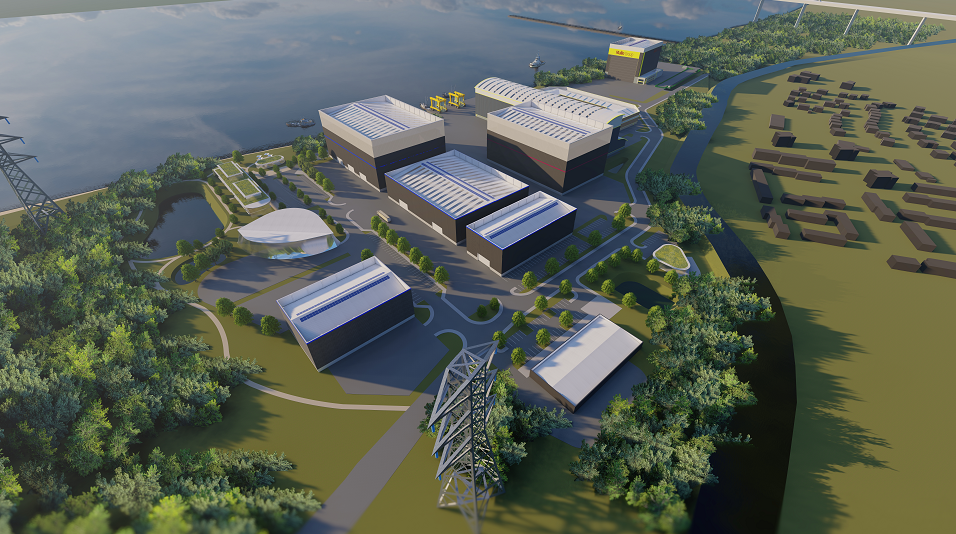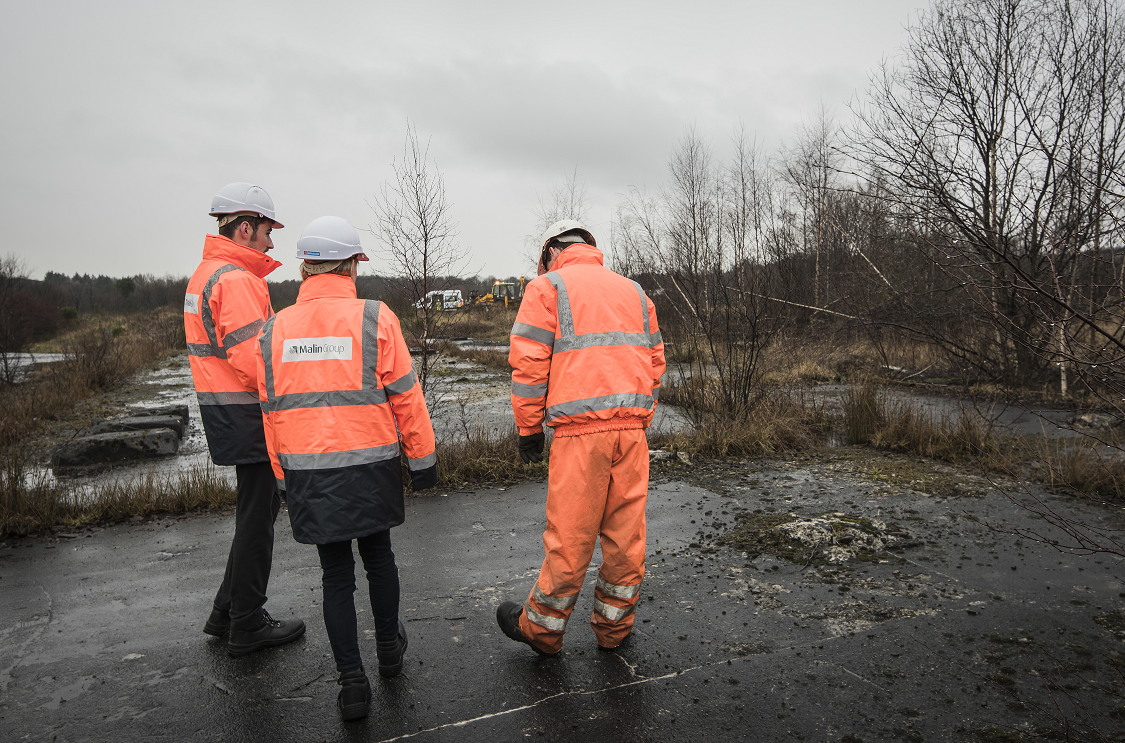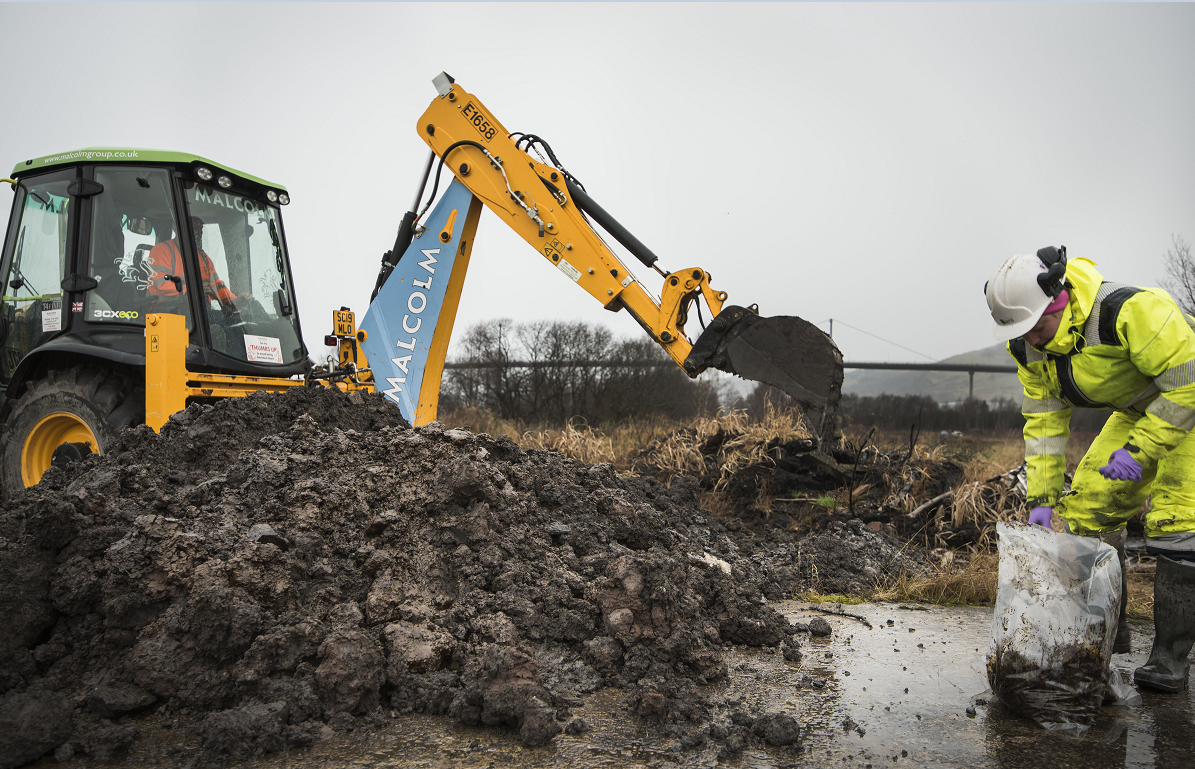Scotland is undergoing an innovation revolution and one company at the forefront of this, is Malin Group.
Originally called Henry Abram, Malin Group was established in 1899 - when Glasgow was at the height of world ship building. Now a family of specialised brands and teams, Malin Group provides end to end solutions to the marine industry.
The company’s Scottish Marine Technology Park (SMTP) is a European first. A 47 acre site, formerly the Carless Oil Terminal at Old Kilpatrick, which will be transformed into a world leading beacon of marine manufacturing and marine innovation on the banks of Scotland’s famous River Clyde.

As well as the obvious industrial legacy of the company, the new site has a lot of history, having been a secondary target for the Luftwaffe during World War II. After the war the site returned to civilian use and was subsequently decommissioned in 1995. Once demolished, it sat empty and unused until 2016 when Malin Group Properties purchased the land. Now, the exciting SMTP project is sure to bring life back to this area of the river.
Samuel Lee, the Business Unit Manager of the site, says that the intention is for the new park to consist of three main features.
Malin Group
The first of the features included in the SMTP will be Malin Group’s traditional focus on Oil and Gas, shipbuilding and also a commitment to their already large contribution to the renewables sector.
Malin Group continues to work in the Oil and Gas sectors, as well as workboat construction. Recently having received phase 1 planning for a large fabrication shed, a real milestone has been reached. The aim is to expand their renewable manufacturing capabilities in line with the company’s core values of integrity, impartiality, creativity and excellence.
To support the creativity and excellence of Malin Group colleagues, teams are continually challenged to collaborate, undertake training and develop best practice. Within Malin Group HQ, there’s a climbing wall, a pool table and a communal eating area with fresh fruit available for free to all staff. Other spaces enable workers to take time out, to think outside the box, share ideas, challenge and create.
Despite the company being over 100 years old, it’s clear that you can teach an old dog, new tricks and Malin Group’s commitment to renewables as well as the health and wellbeing of their staff is something that is rooted firmly in the present. The focus on renewables is also telling of the company’s efforts to cut down carbon emissions and play their part in helping Glasgow and the rest of Scotland meet their 2045 net-zero goal.

Common Marine Facility
The Common Marine Facility (CMF), Samuel Lee notes, is the most important to the longevity of the park. At the heart of the CMF will be an impressive 150m quay and 1100 ton ship lift which will be communal for all users of the CMF. The ship lift will be available to smaller vessels and ferries using the Clyde but will also likely be able to service 59% of the Caledonian Macbrayne fleet, Scotland’s leading ferry service. Once delivered, the ship lift will be the biggest of its type in Europe, continuing Glasgow’s leading reputation in the shipbuilding industry.
Committed to innovation and the regeneration of their area of the Clyde, the CMF will also have buildings to support various other companies. Currently, businesses in ship repair, welding and fabrication, marine electrical installation and heavy lift cranage are interested in the space.
The demand for the CMF is clearly there, which is really encouraging for the park and we are working hard to ensure we find the right companies that fit the profile required for a technology park such as this.
Amenities and Innovation Hub
The Amenities and Innovation Hub will be crucial for the future of the park. Within the innovation district, Malin Group are looking to provide large, open office space for SMEs as well as a research and development training centre. There will also be smaller buildings available at extremely low rates for start-ups looking to join the park.

Outside the districts we are working hard to ensure the park is as self-sufficient as possible. We are currently proposing solar panels be fitted to the roofs of all the buildings. We will also be installing EV chargers on all car parking spaces.
It’s fair to say this isn’t your standard industrial estate, with the company looking to use a battery powered bus to ferry workers from the nearby Old Kilpatrick station to the site. All of these options feed into the larger outlook for the park, which, in keeping with Malin Group’s corporate values, is founded upon innovative, creative and technologically advanced plans.
Despite having hubs in London, Aberdeen, Hong Kong and Shanghai, Glasgow and the West of Scotland remain very much a key location for the group.
Samuel also notes that skilled talent is a huge benefit of setting up shop in Scotland:
Glasgow particularly, offers talent above a lot of other areas in the UK. The Naval Architecture department at Strathclyde University is recognised and indeed renowned around the globe year upon year.
Malin Group are proud to be contributing towards the regeneration of the Clyde and progression of the marine sector whilst maintaining the ethos of an employee-centric business. And so they should be. With one foot headed towards innovation and the other staying committed to the legacy of years gone by, Malin Group’s focus on innovation and green thinking are bound to mean a successful future for Glasgow’s River Clyde.